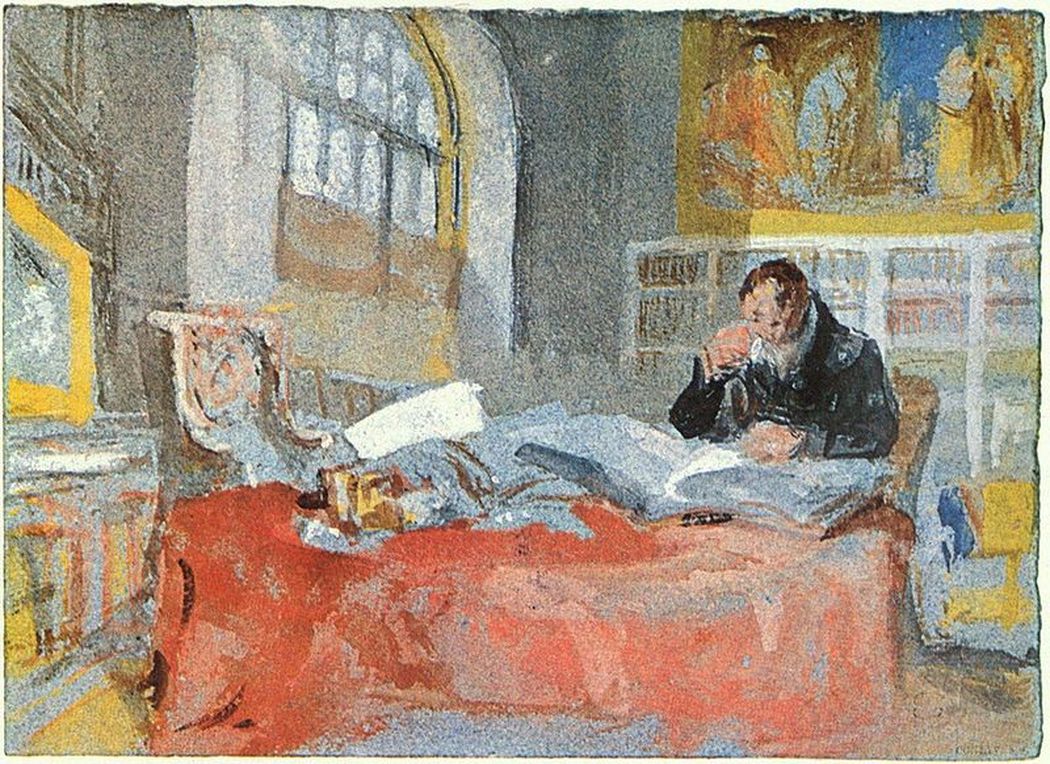About the author
Selby Whittingham is a scholar and art expert and has worked as a consultant to several museums and galleries. He is Secretary of The Independent Turner Society and Trustee of the Turner Museum.
While there are so many successful museums devoted to individual artists in Europe and elsewhere, and indeed more than one for several, it seems deplorable that there is none for J.M.W.Turner, when the bountiful contents of his 'studio', received by the British nation in 1856, could furnish one of exceptional interest. Since the bicentenary of his birth in 1975 I have campaigned to rectify this omission.
Turner constructed his own house in London, and this included a show-room (gallery) for annual exhibitions and a painting-room (studio) from which visitors were excluded. G.F. Watts later maintained a similar separation of studio and gallery. Many anecdotes relate to the house, its visitors and the idiosyncratic way in which the whole was managed. So it was criminal of the landlord to pull it down a generation after Turner died, despite the impassioned protests of an artist, John Brett A.R.A.
An architect assured me that it would be possible to reconstruct the house, and that could make an interesting adjunct to a new Turner museum. Its gallery, however, became much too small to show the contents of Turner's 'studio' except in rotation, whereas Turner wanted a permanent display of at least all his unsold finished oil paintings.
He considered two schemes - to add a gallery either to the National Gallery or to his projected almshouse for poor artists. In the end he plumped for the National Gallery option, probably as being the more certain, though in the event that was mired in uncertainties over its future, and the finished pictures which should be the core of his permanent gallery were scattered as they are still.
People in every generation since his death have deplored this failure, and in 1975 I gained the support of luminaries such as Sir John Betjeman, Sir Hugh Casson, Sir Kenneth Clark and Henry Moore, all in vain. Not only did the three national museums who shared the spoils of the carve-up oppose the creation of a really adequate Turner Gallery, but so has the art establishment and increasingly the Turner one too.

J.M.W. Turner, The Artist in his Studio (British Museum). Used under a Creative Commons license.
By contrast in America a Turner Museum was created. This was done in 1973 by an enthusiast, Douglass Montrose-Graem, after he had built up a major collection of Turner prints, an important element of Turner's work which should be properly represented in the British Turner Gallery. After gaining bouquets in Denver, it was moved to Florida, where financial backing is needed for a new building.
We held an international symposium, The Artist's Home / Gallery / Monument, at Paris in 1990 and a few years after issued a directory of such museums, the genre being notably neglected in reference books and museological studies until recently. What is striking is how diverse these museums are, which is part of their attraction and a reflection of artistic individuality, whereas civic museums tend bureaucratically to imitate each other.
Perhaps the most successful are those rooted in the artist's physical context. Art seen in the studio where it was created comes particularly alive. But there is the wider context of the situation, city, province or country, not least in the case of a landscape painter such as Turner. This is something ignored by the average curator, connoisseur and iconographer, but patent to those studying the varying responses which art evokes, such as Philippe de Montebello in Rendez-vous with Art (2014). It was better understood in the Romantic Age than in ours.
For a Turner museum in America the lack of an historical or geographical context has been compensated for by creating another. In place of just sight and the intellect, appeal is made to all five senses. This has justification in the polymorphous nature of Turner. That makes him hard to fit in to a single perspective. Some considerations that might be applied to housing his bequest in London I have outlined in a tract, A Vision of the First Proper National “Turner's Gallery" (2007). A public discussion of these questions is long overdue. It would be more productive of a vital appreciation of his art than are most of the often interesting, but recondite, ruminations of library-immured scholars writing for likeminded specialists.
Selby Whittingham is a scholar and art expert and has worked as a consultant to several museums and galleries. He is Secretary of The Independent Turner Society and Trustee of the Turner Museum.